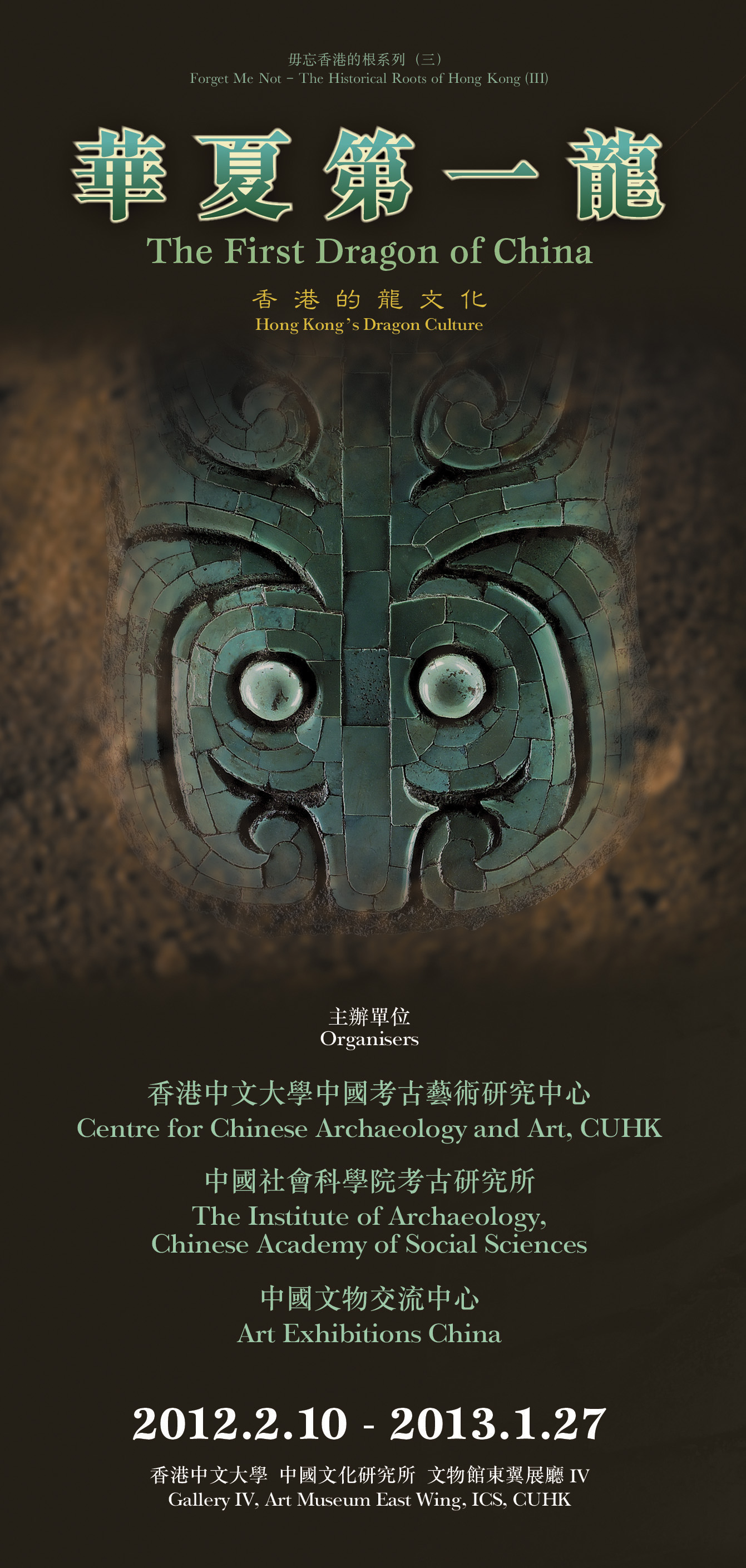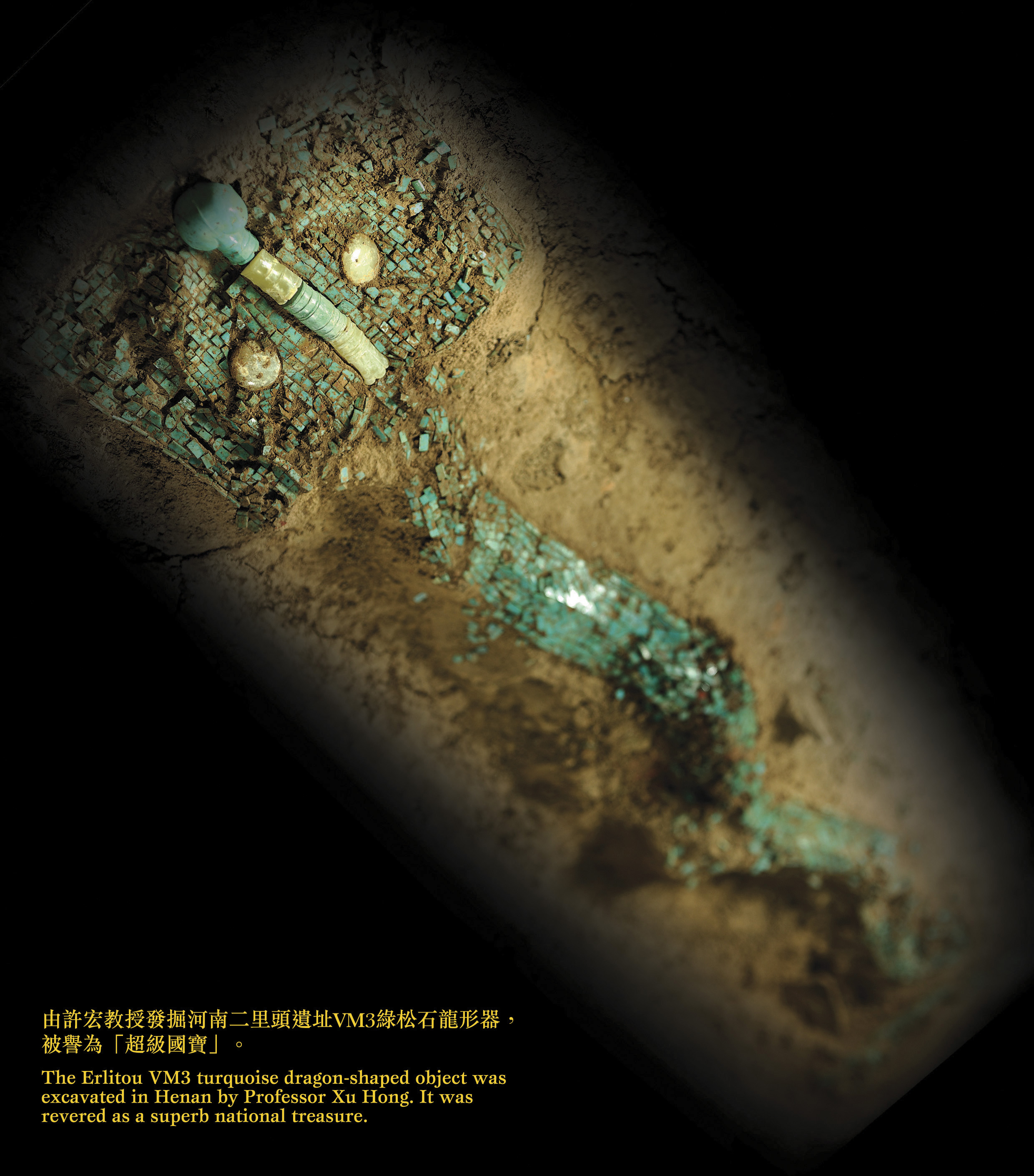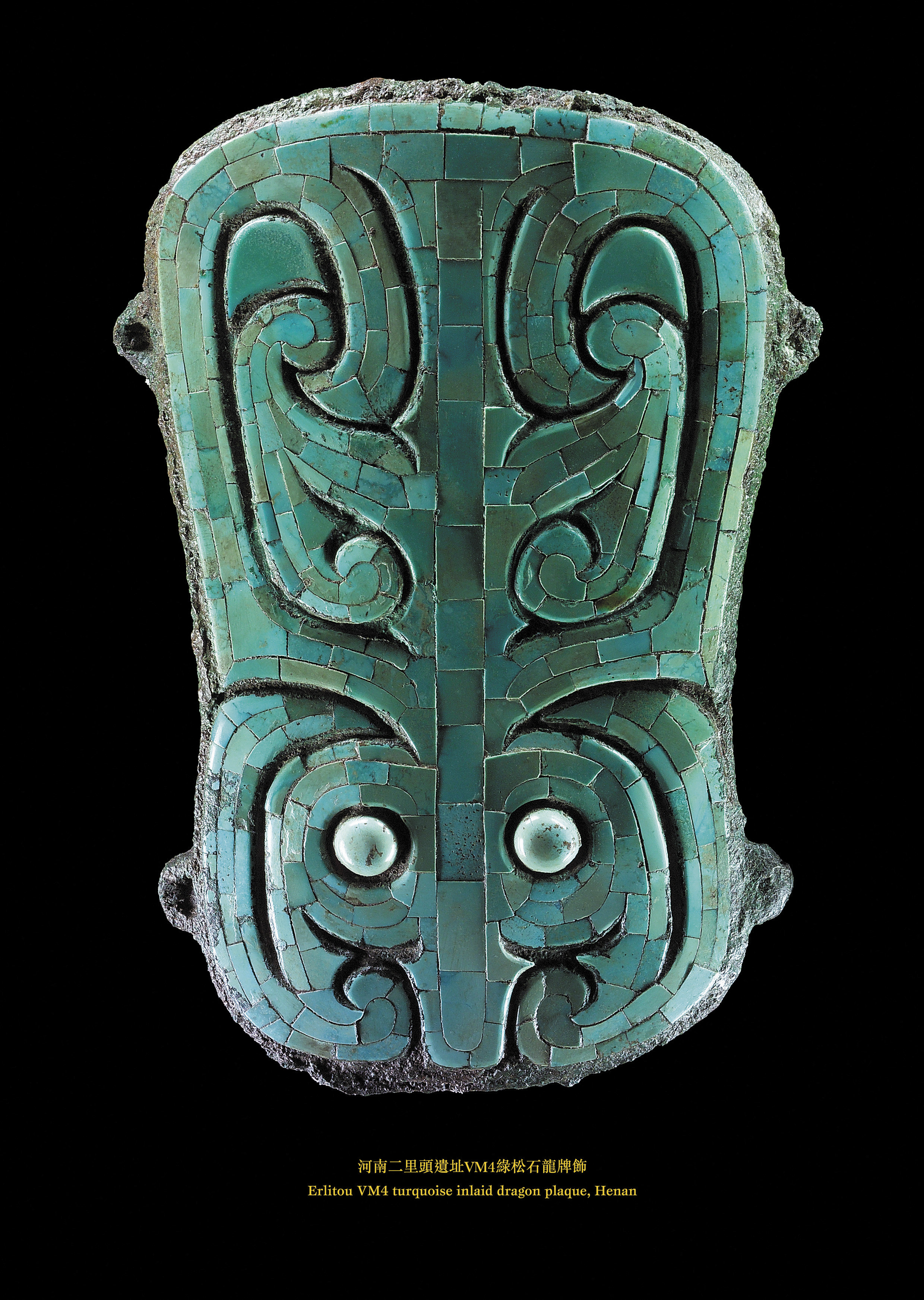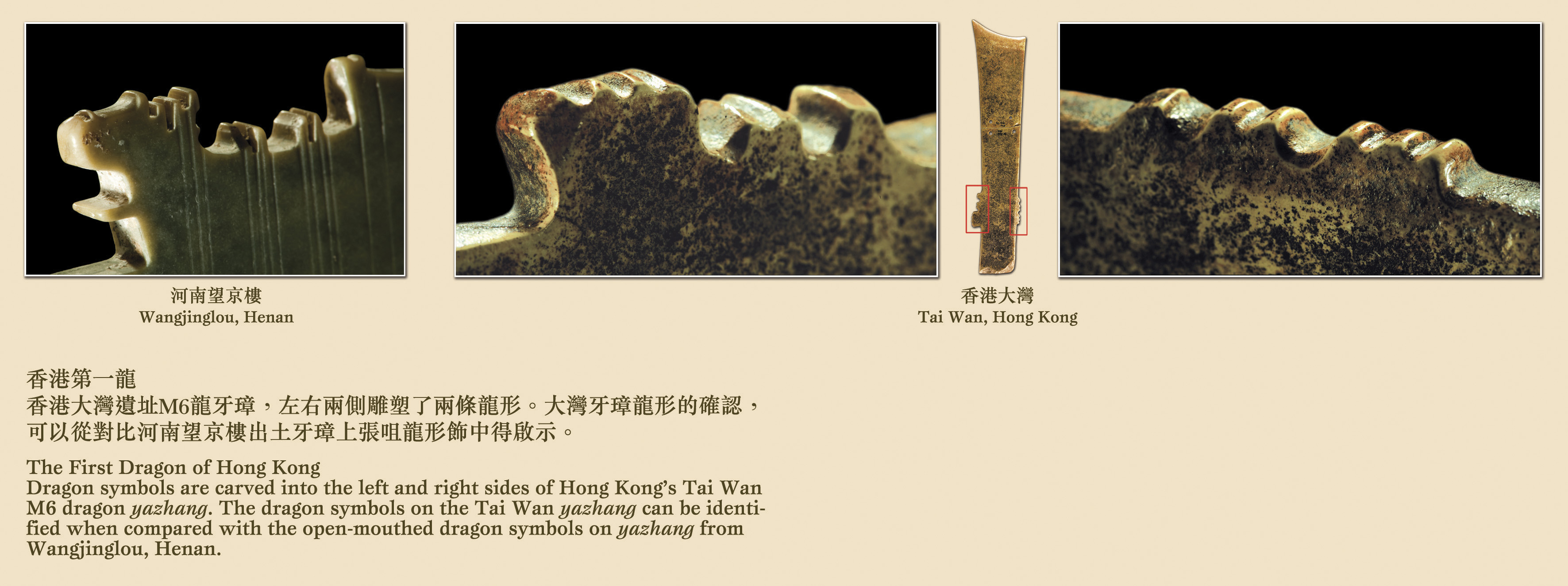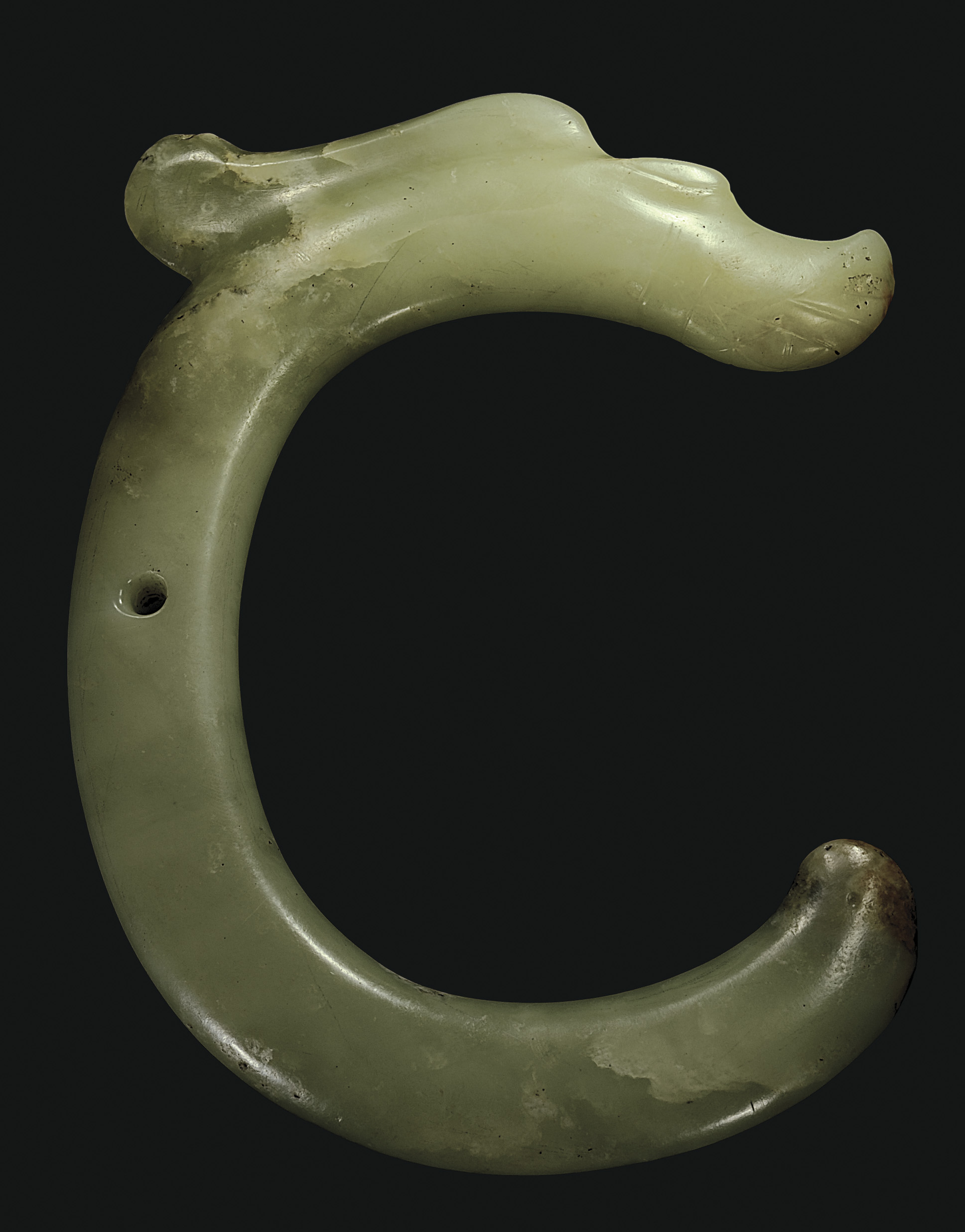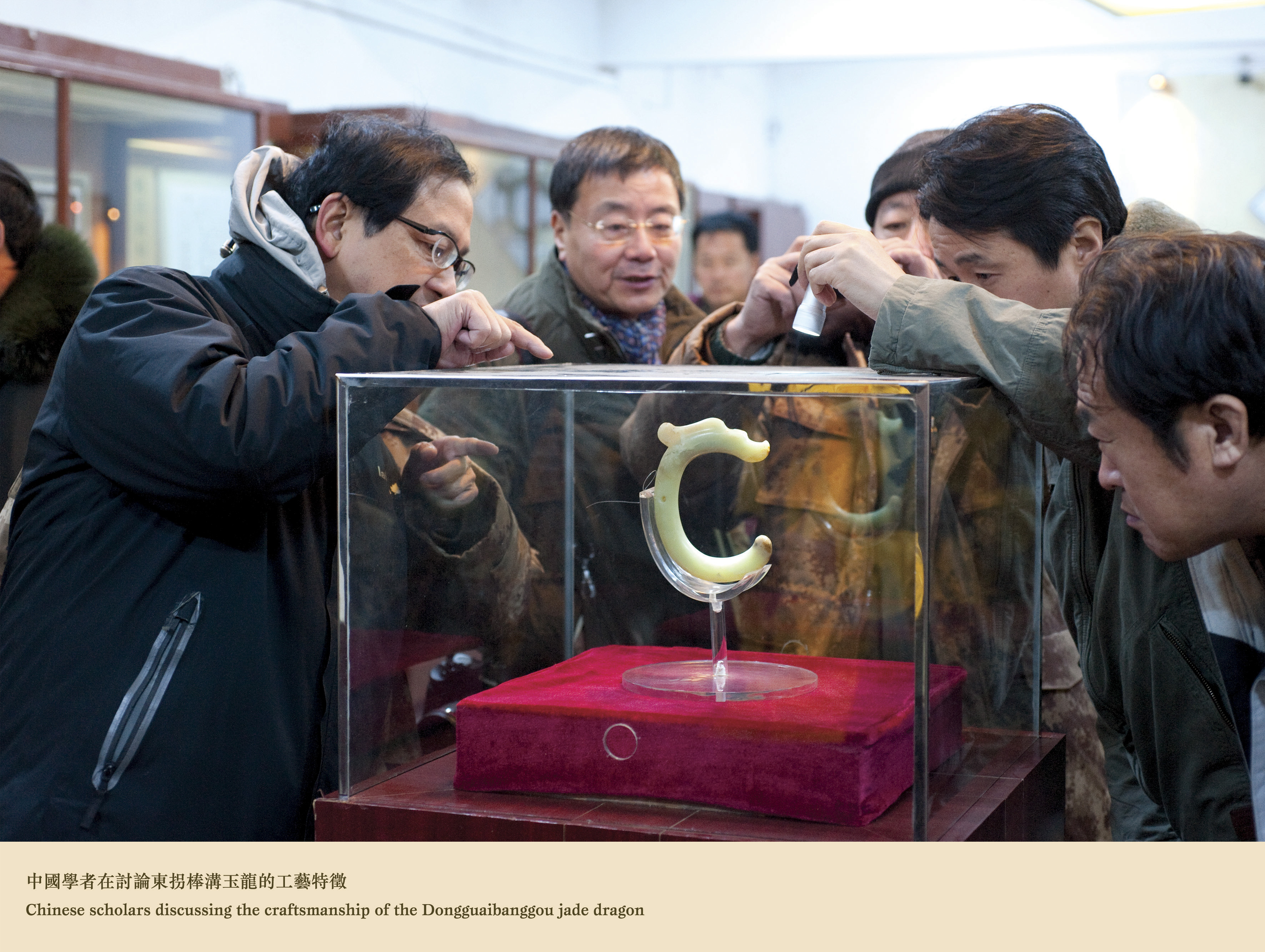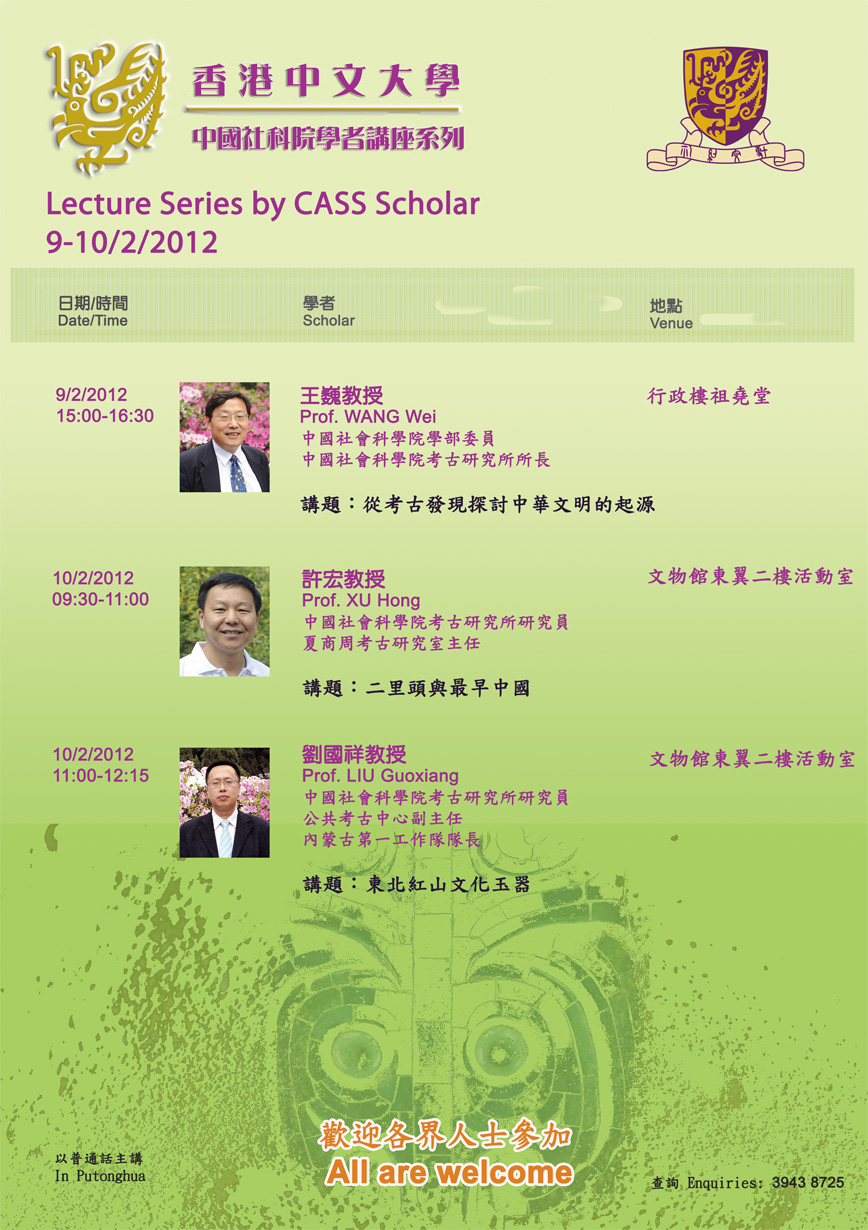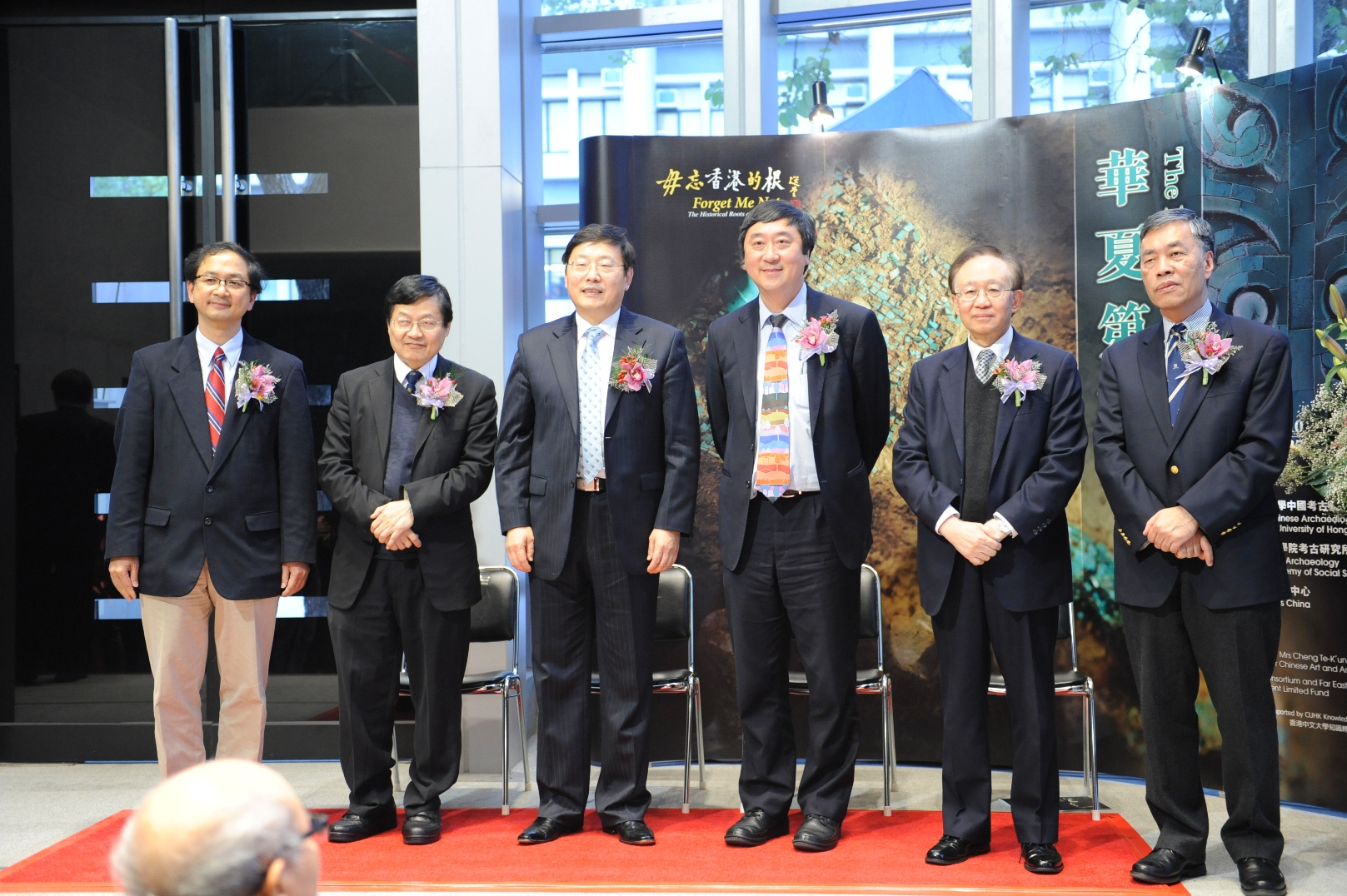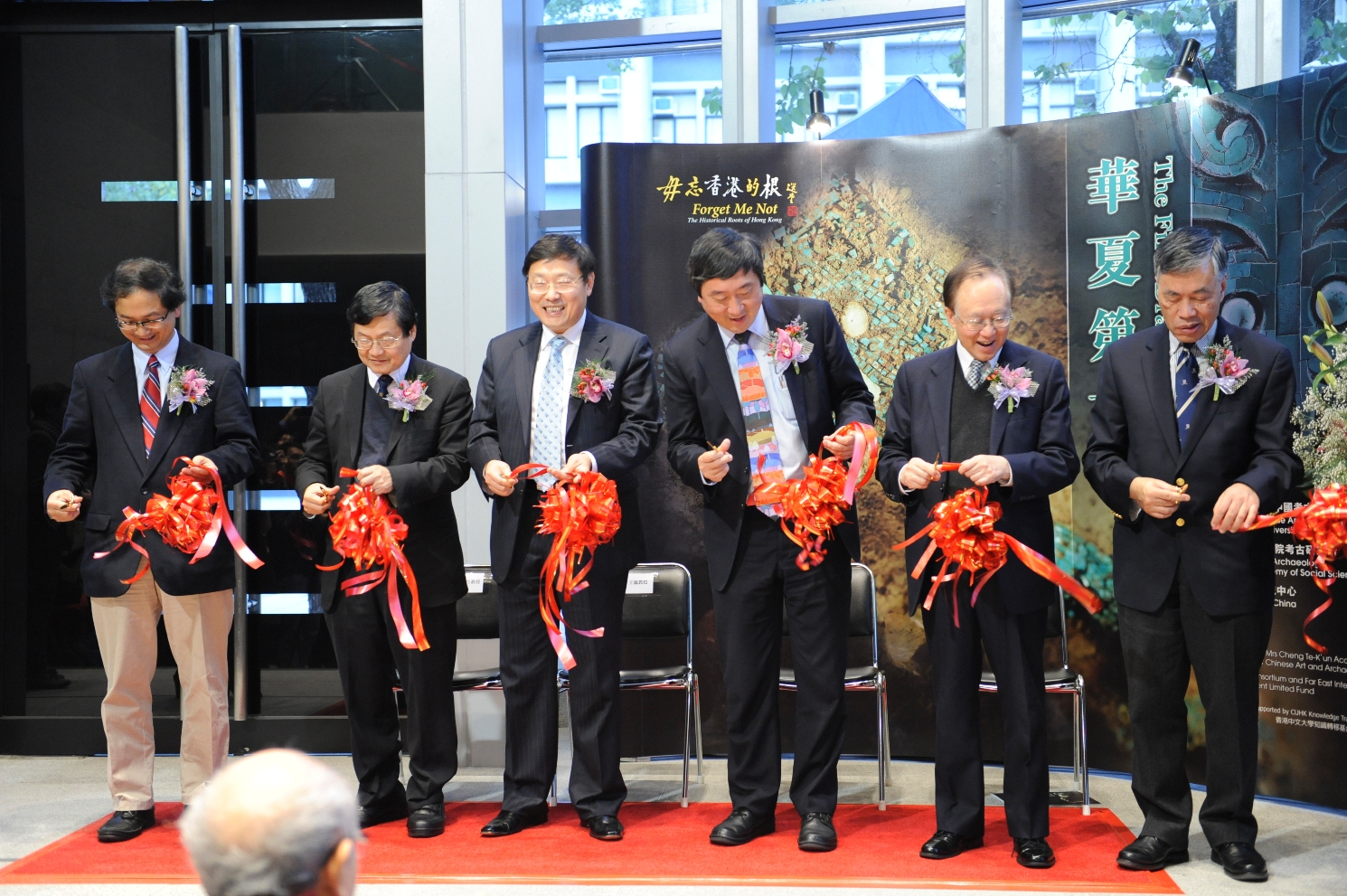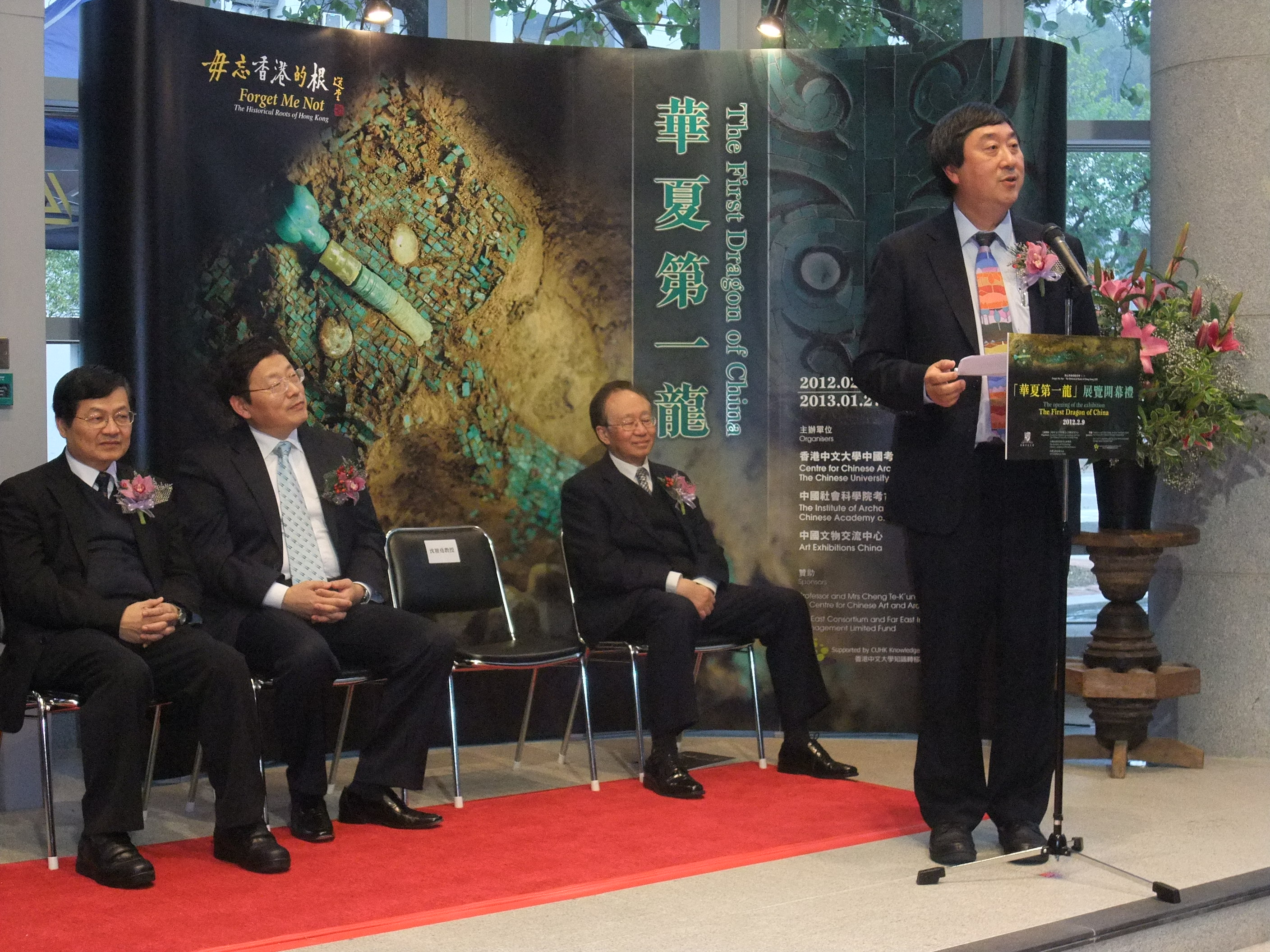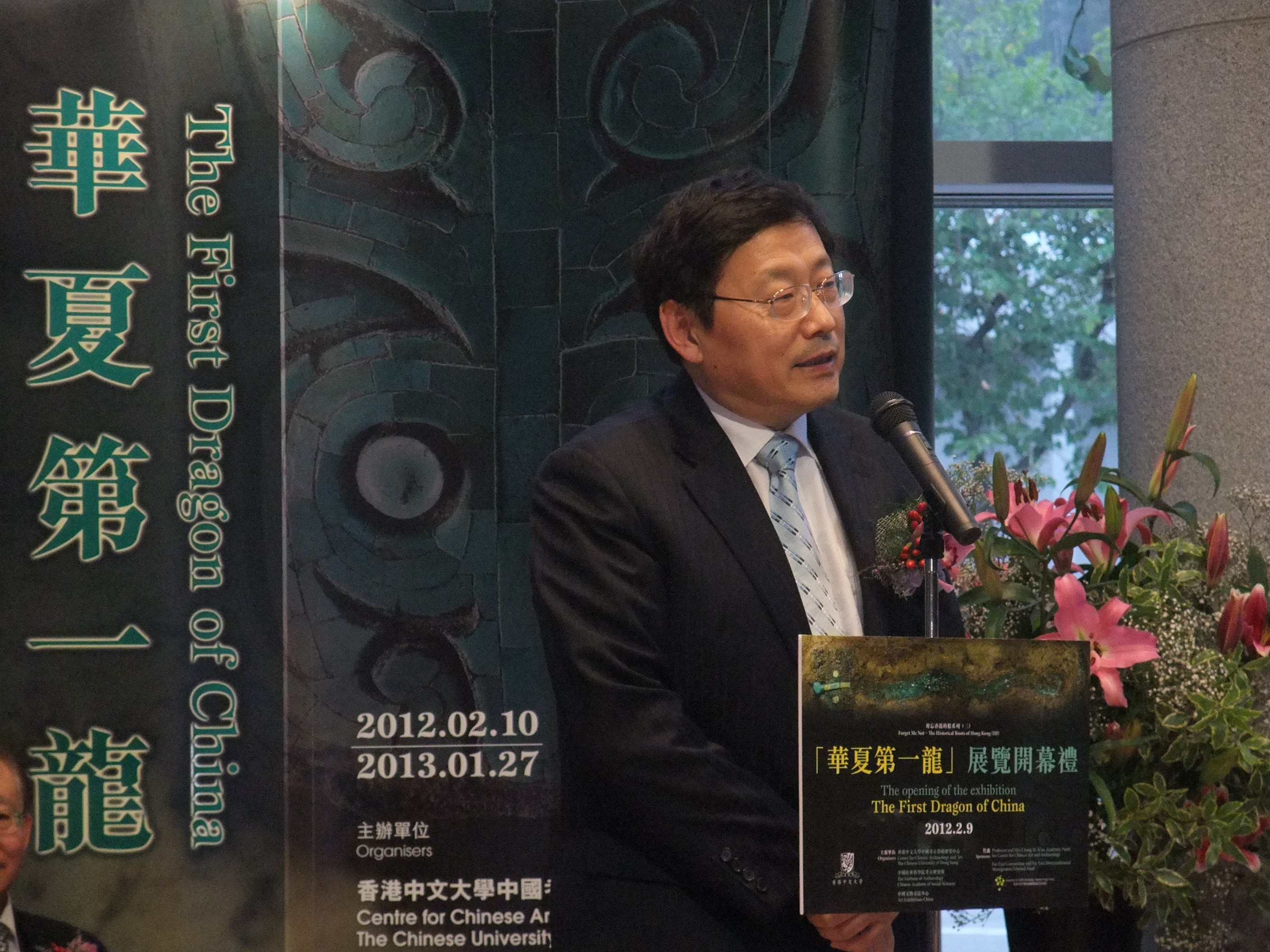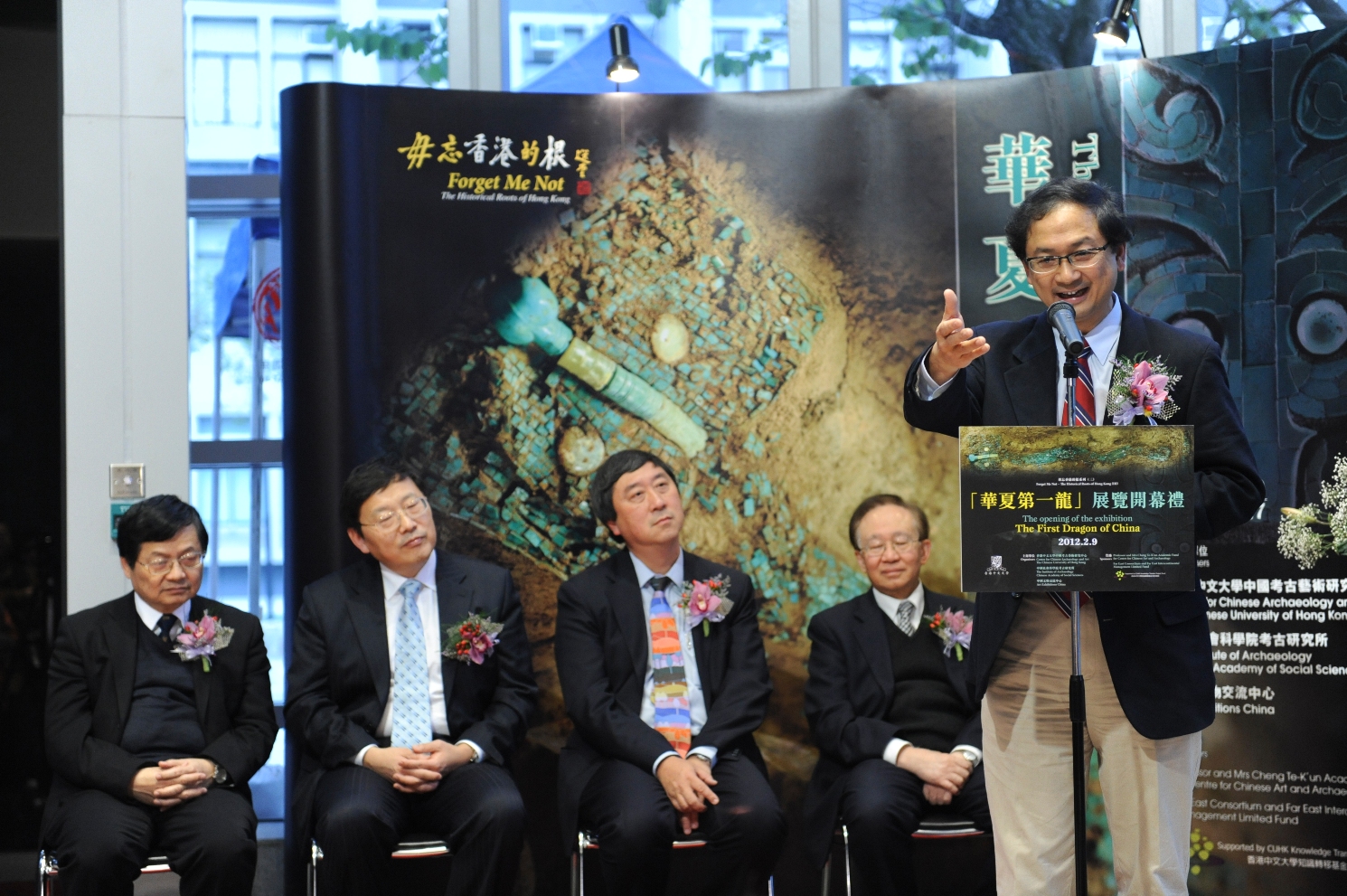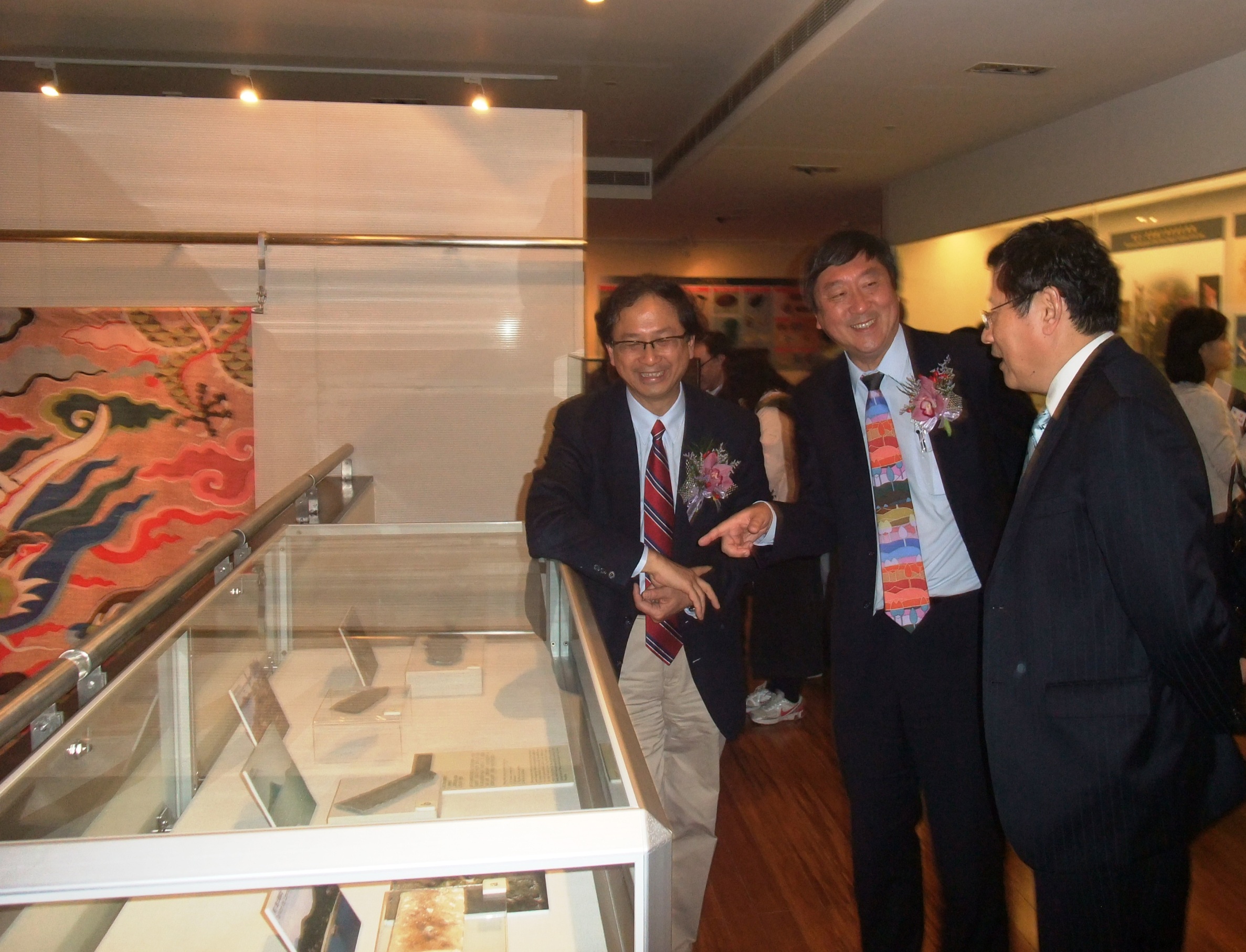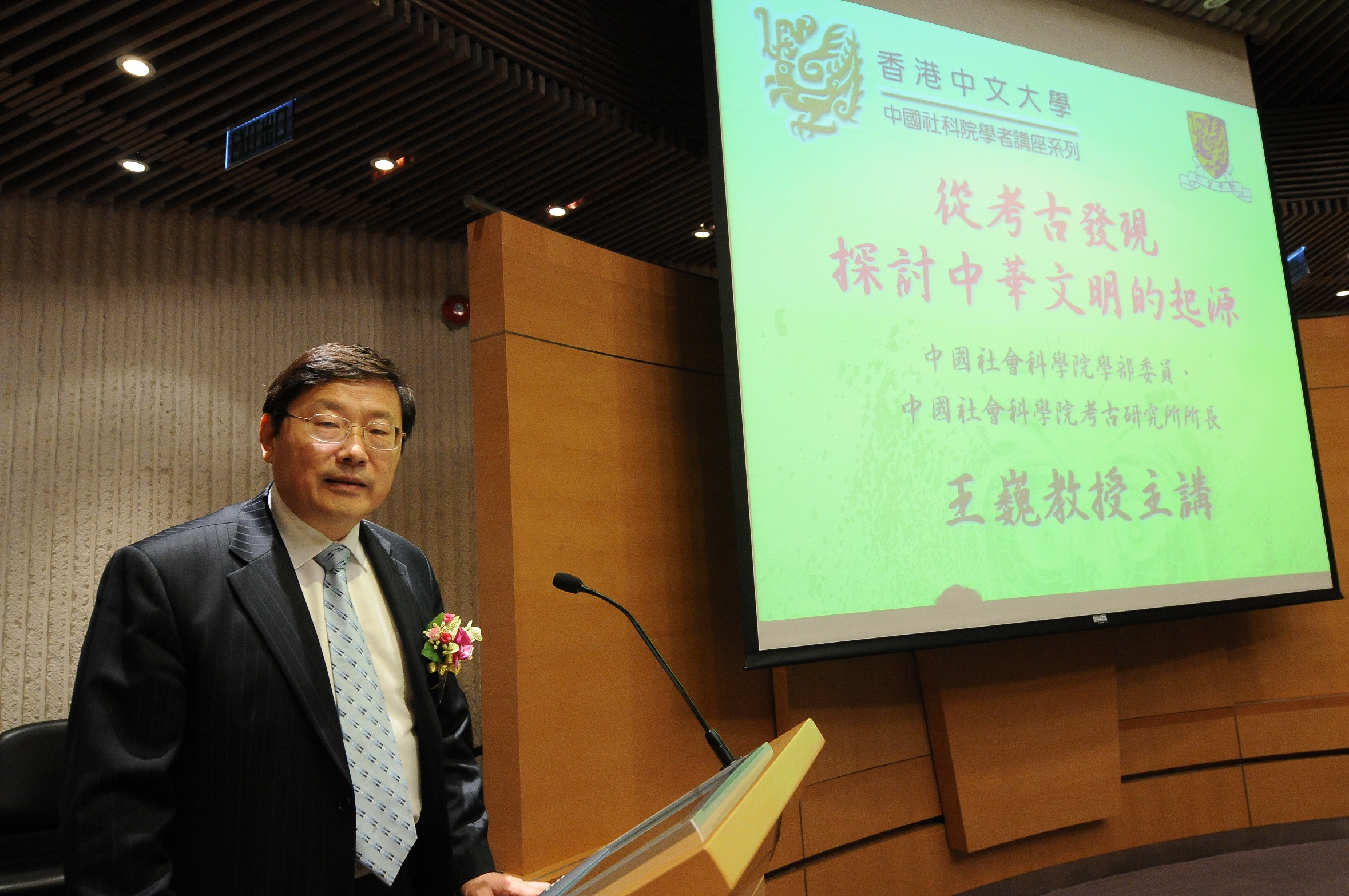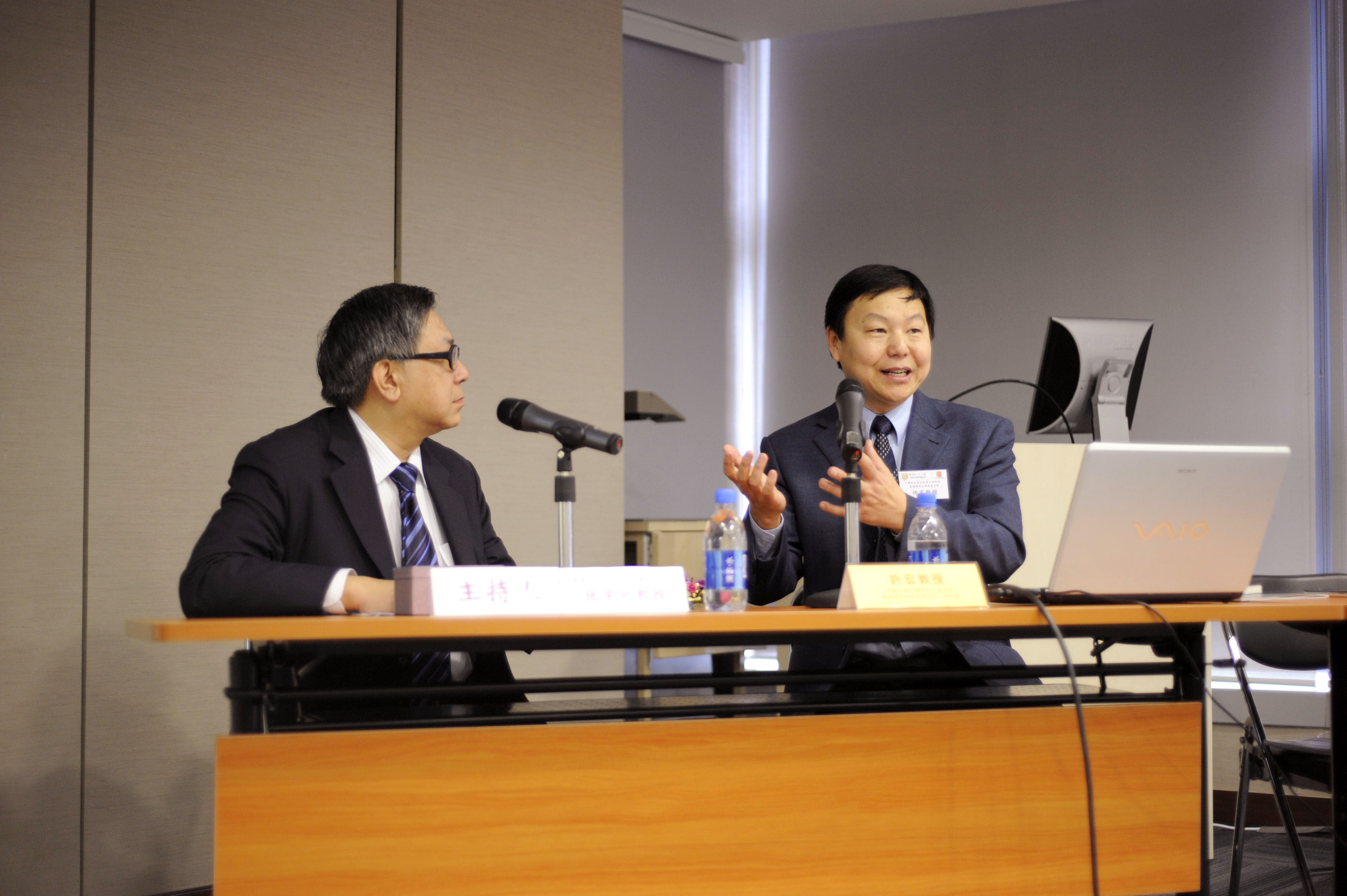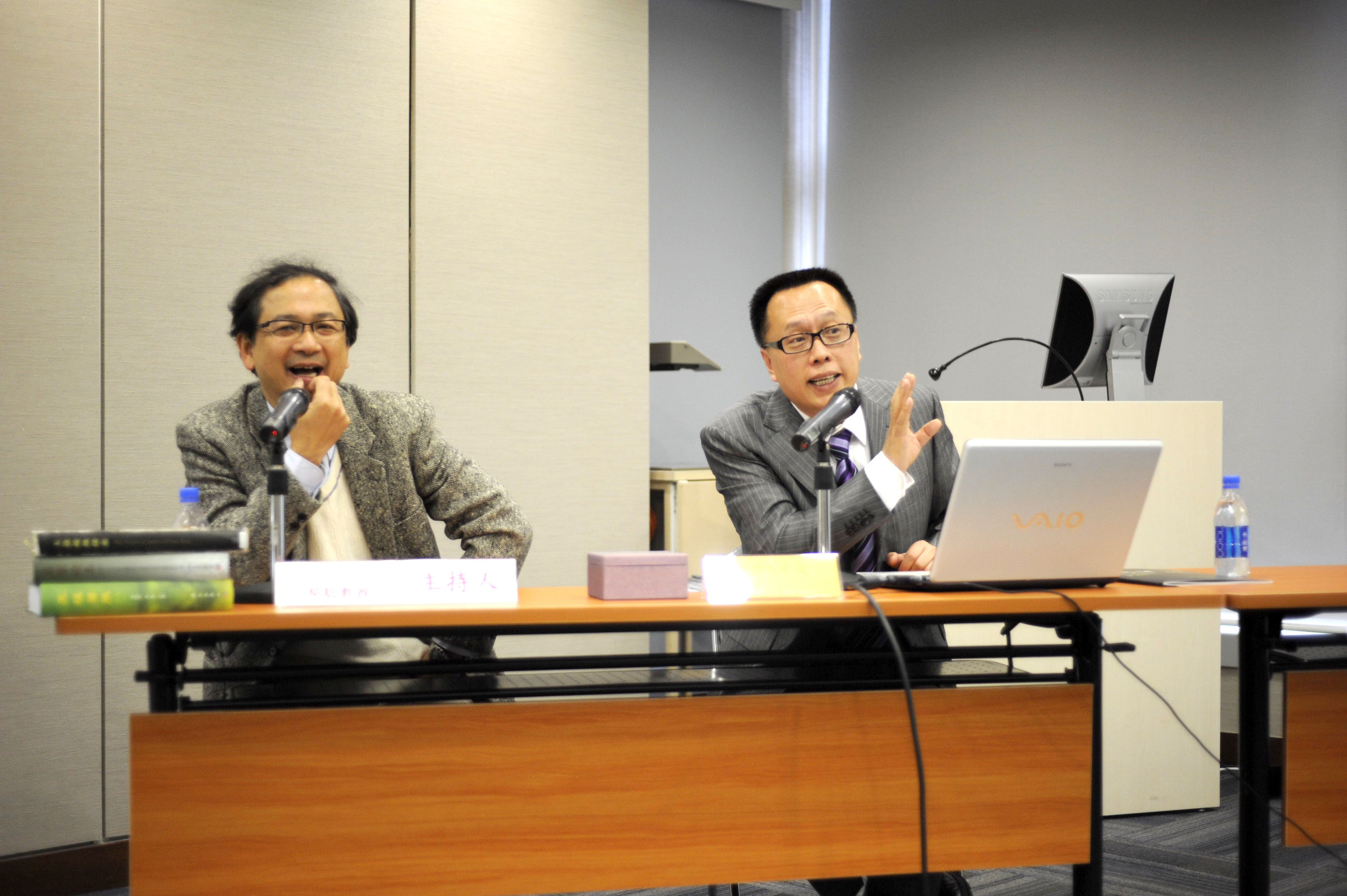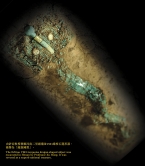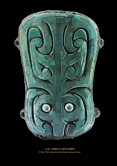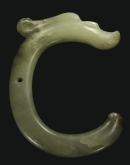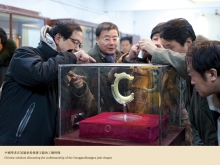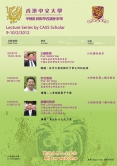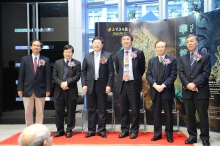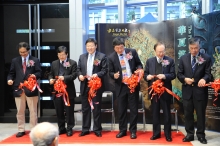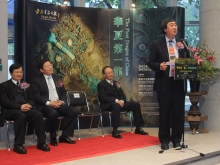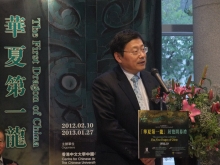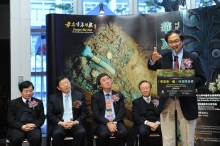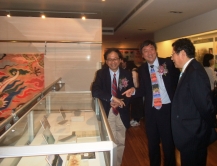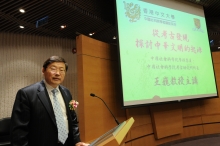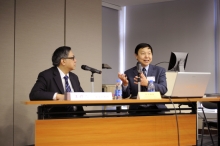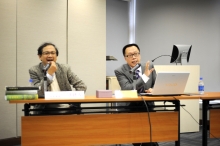CUHK
News Centre
CUHK Hosts Exhibition on the Origins of Dragons and CASS Archaeological Scholars Lecture on Dawn of Chinese Civilization
To greet the Year of the Dragon, the Centre for Chinese Archaeology and Art of the Institute of Chinese Studies at The Chinese University of Hong Kong (CUHK) will organize ‘The First Dragon of China’ exhibition jointly with The Institute of Archaeology of the Chinese Academy of Social Sciences (CASS) and Art Exhibitions China from 10 February 2012 to 27 January 2013. Members of the public are welcome.
The opening ceremony of the exhibition was held today (9 February), officiated by Prof. Joseph J. Y. SUNG, Vice-Chancellor of CUHK; Prof. WANG Wei, Director of Institute of Archaeology, CASS; Dr. Simon KWAN, Member of Advisory Committee of the Art Museum, CUHK; Prof. LEUNG Yuen-sang, Dean of Faculty of Arts, CUHK; Prof. Peter Y. K. LAM, Director of the Art Museum, CUHK; and Prof. TANG Chung, Director of Centre for Chinese Archaeology and Art, CUHK.
The Origins of Dragons: An Archaeological Perspective
The history of dragons is one of the greatest unsolved mysteries in Chinese culture. In the past, most people assumed that dragons are representations of Chinese emperors through the dynasties, yet very little is known about the origins of these mythological beasts. The exhibition presents the most recent findings from collaborations between CUHK and CASS, including investigations of early dragons in Neolithic China, the involvement of dragons in politics along with the rise of early civilization, and the appearance of dragon symbolism in Hong Kong more than 3,000 years ago. The examination of the origins of dragons from an archaeological perspective breaks popular myths about the nature of dragons.
Dragon-related National Treasures Displayed in Hong Kong
The exhibition showcases numerous rare artefacts, including a national treasure turquoise inlaid dragon plaque, as well as turquoise plates from a ‘superb national treasure’ – a large dragon-shaped object that has never been exhibited beyond mainland Chinese borders. Both dragon relics came from Erlitou in Henan, an archaeological site revered as the ‘First Capital of China’. The artefacts were contributed by the Institute of Archaeology at CASS.
Another noteworthy display is a 3,000-year-old Shang period yazhang, a ritual object excavated by CUHK on Lamma Island in Hong Kong. This yazhang was displayed in the ‘National Treasures – Gems of China’s Cultural Relics’ exhibition, an event jointly organized by China’s State Bureau of Cultural Relics and the Hong Kong Provisional Urban Council in 1997. Last year, the Centre for Chinese Archaeology and Art at CUHK confirmed for the first time that there is a pair of dragon symbols on both sides of this yazhang. It is believed that the yazhang arrived in Hong Kong from eastern Guangdong by sea. It is to date the earliest known symbol of dragons found in Hong Kong.
Learning about Our Past: Rediscovering Hong Kong’s Roots
Hong Kong’s dragon yazhang exemplifies how the territory’s rich humanistic heritage reaches far back to the Shang period. To illustrate the societal background of this period, other precious Shang period artefacts excavated in Hong Kong will also be displayed at the exhibition, including ritual objects and necklace accessories of special status, militaristic symbol ge, and daily cooking utensils.
Members of the public are welcome to visit the CUHK Art Museum to view these exceptional artefacts of great academic and artistic value. Admission is free. The Centre for Chinese Archaeology and Art will also present its full-colour, bilingual publication The First Dragon of China Exhibition Catalogue at the exhibition. Supported by the CUHK Knowledge Transfer Project Fund, the publication is available for sale at HK$10. Proceeds will go towards supporting public understanding of archaeology. ‘The First Dragon of China’ is the third exhibition in the ‘Forget Me Not – The Historical Roots of Hong Kong’ exhibition series. Details are as follows:
Date: 10 February 2012 – 27 January 2013
(Closed on 24, 31 December 2012 and public holidays)
Venue: Gallery IV, Art Museum East Wing, Institute of Chinese Studies, CUHK
Hours: 10:00am – 5:00pm
Enquiries: 3943 7371
Lecture Series by Chinese Academy of Social Sciences (CASS) Scholars
Apart from co-organizing ‘The First Dragon of China’ exhibition with CASS, CUHK staged the first ‘CASS Scholars Visit Programme’, inviting CASS scholars to visit the University each year and deliver public lectures to forge academic exchange in the humanities and social sciences. The programme aims at promoting high-level research and academic exchange between CUHK and CASS, and paving the way for further collaboration.
The first visit programme is held from 9 – 10 February in CUHK with the theme of archaeology. The CASS delegation comprises Prof. Wang Wei, Director of Institute of Archaeology, CASS; Prof. Xu Hong, Director of Department of Xia, Shang and Zhou Archaeology, Institute of Archaeology, CASS; Prof. Liu Guoxiang, Deputy Director of Centre for Public Archaeology, Institute of Archaeology, CASS; and Prof. Gong Wen, Deputy Director of Scientific Research Office of Institute of Archaeology, CASS. The delegates visited the Department of History, the Centre for Chinese Archaeology and Art of the Institute of Chinese Studies and the Art Museum at CUHK to learn about and exchange ideas on relevant research projects and developments.
During their visit, Professor Wang, Professor Xu and Professor Liu delivered three public lectures to share insight in their areas of expertise in archaeology. Professor Wang gave an overview of a number of research accomplishments in searching for the origin of Chinese civilization. Through a comparative study of ancient civilizations in China and other countries, Professor Wang outlined the origin and the formation process of Chinese civilization and addressed its status in the evolution of human civilization. Through introducing the excavation of the Erlitou site, Professor Xu examined the roles of palace planning, social structure, religious system and core culture in the emergence and development of early China. Professor Liu talked about the prehistoric development of Jade culture and its influence in the formation of ritual system in ancient China.
The Erlitou turquoise dragon-shaped object was excavated in Henan by Prof. Xu Hong. It was revered as a superb national treasure.
The First Dragon of Hong Kong — Dragon symbols are carved into the left and right sides of Hong Kong's Tai Wan dragon yazhang. The dragon symbols on the Tai Wan yazhang can be identified when compared with the open-mouthed dragon symbols on yazhang from Wangjinglou, Henan (left).
The earliest known jade dragon in China, which was dated to approximately 6,000 years ago, was found in Dongguaibanggou, Inner Mongolia. Currently, The Chinese University of Hong Kong is collaborating with the Institute of Archaeology at the Chinese Academy of Social Sciences to study the jade dragon.
The opening ceremony of ‘The First Dragon of China’ Exhibition is officiated by (from left) Prof. Tang Chung, Director, Centre for Chinese Archaeology and Art, CUHK; Prof. Leung Yuen-sang, Dean, Faculty of Arts, CUHK; Prof. Wang Wei, Director, The Institute of Archaeology, CASS; Prof. Joseph Sung, Vice-Chancellor, CUHK; Dr. Simon Kwan, Member, Advisory Committee of the Art Museum, CUHK; and Prof. Peter Lam, Director, Art Museum, CUHK.


